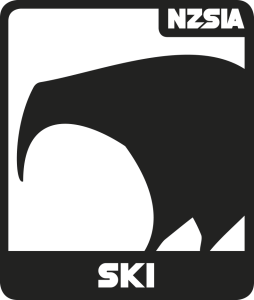Advanced Wedge-To-Parallel
 What, Why, How
What, Why, How
What
The next step towards parallel is an advanced wedge-to-parallel turn. The skier will balance on the outside earlier in the turn and then steer the inside ski to parallel earlier in the turn.
Why
The earlier the skier balances on the outside ski, the earlier the inside ski will be able to become parallel.
How
Skiing faster will allow the skier to feel the outside ski earlier, balancing on it at the beginning of the turn. With increased speed the inside ski will flatten earlier, making it easier to steer to parallel above the fall line.

 Technical Know-how
Technical Know-how
What’s New
Parallel relationship happens above the fall line, only a small wedge for a short time as the turn starts.
Performance Tips
Body: Focus on feeling the arch of the outside foot at the beginning of the turn and, soon after, steer the inside leg to parallel above the fall line.
Turn phases: There is a small wedge at the start of the turn, then a parallel relationship of the skis is established through the middle and end of the turn.
Skills
Situational Understanding
- Increase the speed of travel, allowing for outside ski balance to be achieved in the beginning third of the turn
- Use easy blue terrain
- The size and duration of the wedge at the start of the turn can be very minimal
Active Stance & Balance
- As the legs incline inside during the start of the turn, angulation is established in a parallel relationship earlier than before
Outside Ski Balance
- Balance to the outside ski will be above the fall line and timed with extension
- Inclination of the legs happens earlier in the turn, underneath a stable upper body, creating angulation in a parallel relationship earlier than previously achieved
Edging
- Grip is established earlier on the outside ski and, due to the increased speed, a greater amount of edge is created
- The inside ski will match edge angle with the outside ski above the fall line
Steering
- The outside ski steers faster than the inside ski as the turn starts to create a wedge. Then, earlier than before, the inside ski steers faster than the outside ski to create the parallel relationship, resulting in the majority of the turn being parallel
Ski Snow Interaction
- Opposing steering angles are created when the wedge is evident, as parallel is created the steering angles match and increase to help influence the size of the turn
- Opposing edge angles are created when the wedge is evident. As parallel is created, the edge angles match and increase to influence the shape of the turn
- The platform angle will reach closer to 90 degrees at the end of the control phase in an advanced wedge-to-parallel turn. This creates more grip and a slight groove for the ski to travel along and helps the skier flatten the skis
 Teaching Tactics
Teaching Tactics
Terrain
Ideally will be introduced on comfortable blue terrain as the skill level of the skier has increased.
Class Handling
You and your students will now, more than likely, be on more advanced terrain in an open mountain environment, so there will be other skiers around. You may also be taking students to areas where runs cross over, so extra vigilance has to be shown in regard to safety. Make sure you are educating your students in the safety codes and etiquette of the mountains.
Example Activities
- “Try and make your skis go parallel earlier!” Try it
- Ski with a smaller wedge, ski faster
- Feel the pull to the outside earlier
- Feel for the arch of your foot earlier
- Stretch and balance
- Allow your bellybutton to move down the hill
- Keep your new outside hand level to the snow
- Rotate your inside leg faster to become parallel earlier

